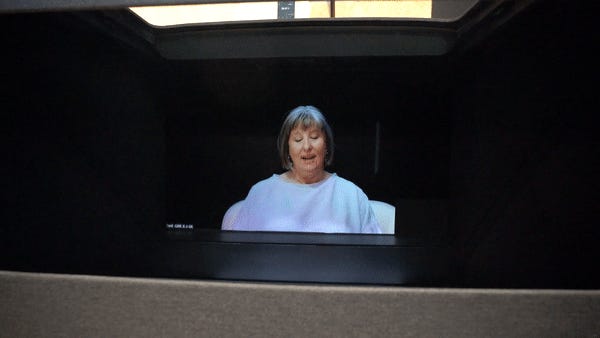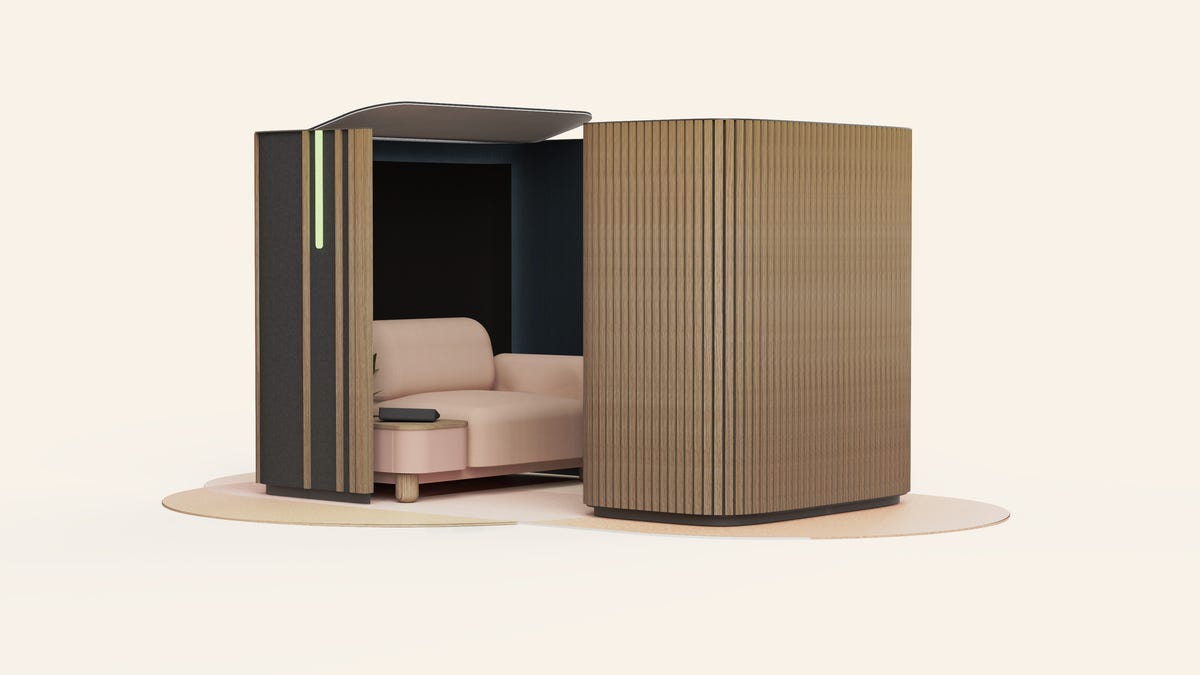I recently had the opportunity to learn about Logitech’s Ghost project. It’s a video conferencing booth, which the company unveiled in January. It accelerated its development for private demos to gather user feedback. All of this is reminiscent of Google’s Starline project. Either way, it’s a very roomy adaptation of the standard laptop-webcam combo for virtual calls.
The goal is common: to make video calls more intimate, by promoting visual cues such as eye contact and body language. These two things are not easy to ensure when your home webcam only films your head and you have open tabs in your browser next to the call window.
But unlike Project Starline, which requires cutting-edge new tech, a 3D mapping laser projector, and a faster-than-light internet connection, Project Ghost leverages existing technology. Namely Rally system and Tap hub, from Logitech. And these technologies are incorporated into furniture designed by Steelcase. This combination results in the most “post-pandemic” invention there is, given what we now know about remote visual communication.

June Wan/ZDNET
Manage eye glaze
Because if the concept of videoconferencing is not new, it really took off when working from home became the norm. And even today, companies are struggling to find the best way to organize virtual conversations.
Eye glaze, or lack thereof, is the biggest issue when evaluating traditional videoconferencing methods, Scott Wharton, B2B general manager at Logitech, tells me as I settle into a comfortable seat. padded. Around me is a cabin – think business class on your favorite airline – with lighting warm enough to be natural, and even some greenery to my left to set the mood.
In front of me is what I can only describe as a black and white puppet scene. But instead of a puppet appearing before my eyes, another person dials the number hundreds of miles away. I watch him silently and curiously. Do I wave like we’re talking face to face, or do I wait for the right moment? And naturally, our eyes meet and the conversation goes like any other.
Appeal to old visual tricks
The illusion of talking face to face is achieved through an old camera trick: Pepper’s ghost. If you’ve ever used a teleprompter or walked around Disney’s Haunted Mansion, you’ve experienced this phenomenon. Thanks to a millimetric assembly of mirrors, an image, or in this case, the other person of the video call, appears as if it were in 3 dimensions.

June Wan/ZDNET
The illusion isn’t as convincing when facing the webcam at an angle. But it is enough to make you feel immersed from the start of the conversation. More importantly, the person on the other side is projected right in front of the Rally webcam, so when you stare at them, you’re also facing the camera.
“We did the opposite of what most others in the industry do. There’s no fancy technology, but I would say that’s a good thing,” Wharton tells me. It’s true. Project Ghost is presented as a tool for offices and other shared workspaces. It is a modular video conferencing booth that is easy to use and can be assembled in two hours. In the future, customers will also be able to choose materials, furniture and dimensions according to their needs.

Here’s a rendering of what a video conferencing booth might look like. Logitech
$20,000 each
Project Ghost is therefore primarily intended for professional users. If you’re hosting a meeting, wouldn’t you want to look your employees in the eye to let them know the importance and value of your messages? But the idea was also floated for medical use, to simulate the comfort and privacy of an in-person consultation.
What the Ghost Project is not, however, is a direct replacement for the webcam you already use at home. No one is going to trade their $50 webcam (or the one built into their laptop) for a therapy video booth. Rather, Logitech sees this idea as aimed at professionals who want a better, more immersive communication platform. And who are willing to pay for it.
Exactly, there is no official price for Project Ghost yet. But Mr. Wharton tells me that the first units will be available in the fall of this year for less than $20,000. That’s a steep price for an ever-changing product category, but Logitech says it’s a relative price compared to what companies typically pay for high-quality furniture and out-of-the-box cameras.
Source: “ZDNet.com”
